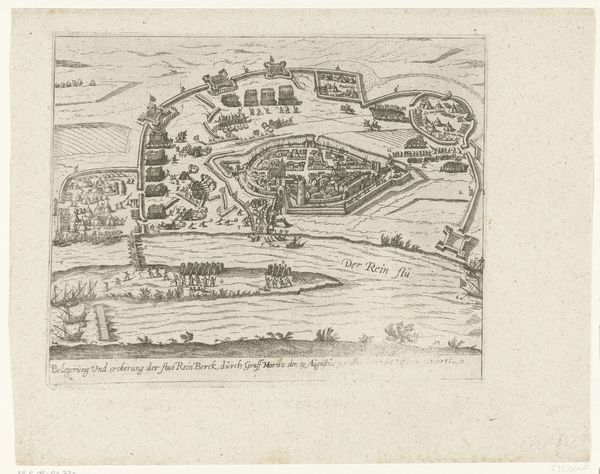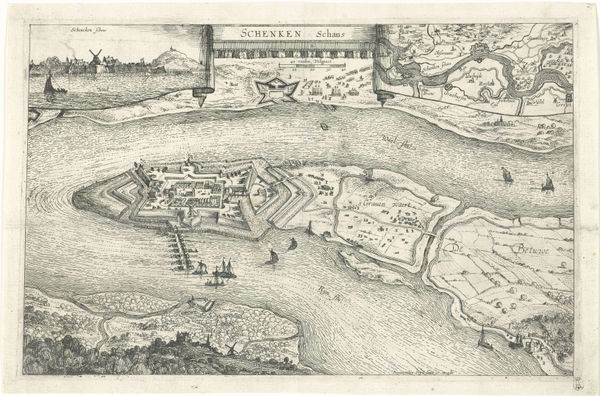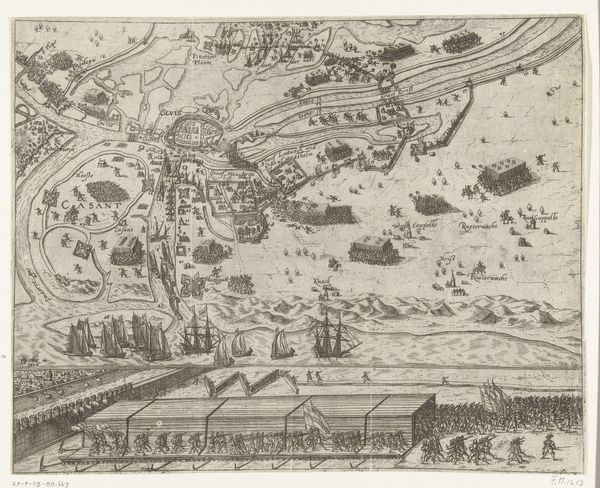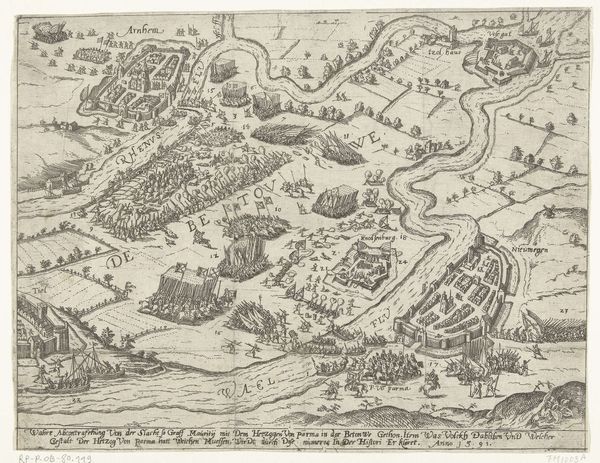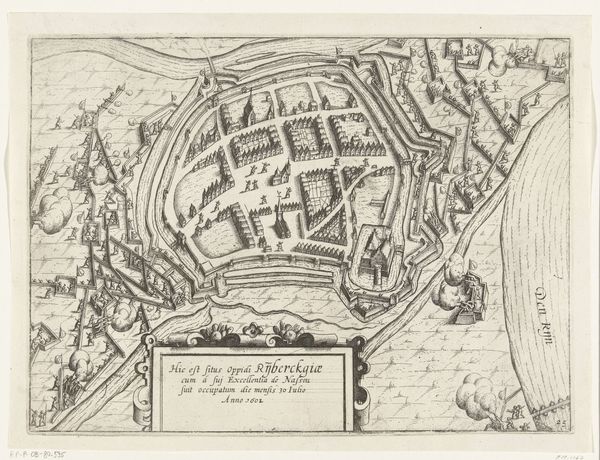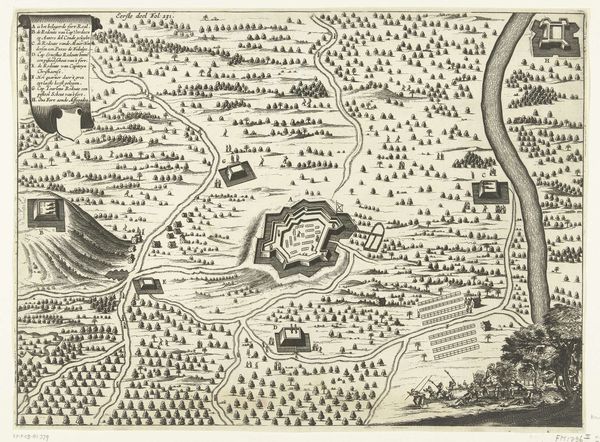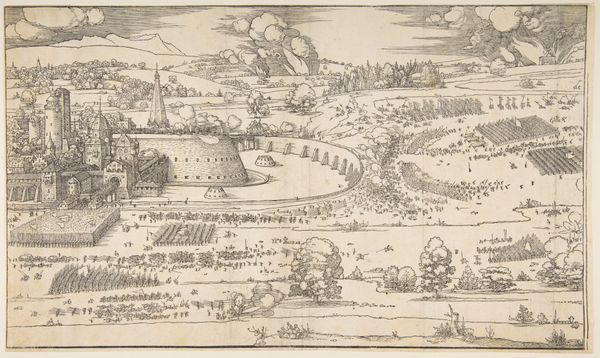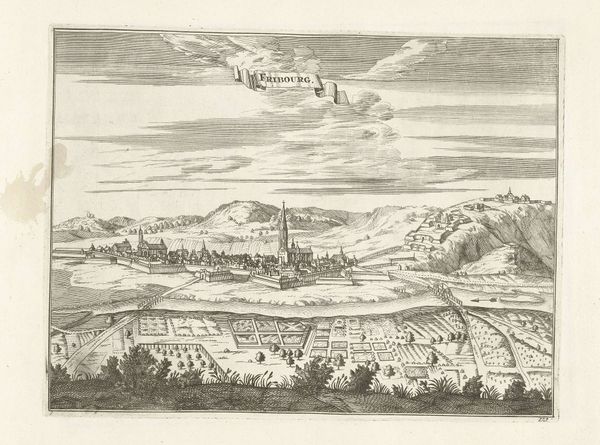
print, etching
#
baroque
# print
#
etching
#
landscape
#
etching
#
cityscape
Dimensions: height 161 mm, width 189 mm
Copyright: Rijks Museum: Open Domain
Curator: Let’s turn our attention to "Inname van Huy, 1703", an etching created between 1706 and 1727 by Pieter Schenk. The piece, currently held in the Rijksmuseum, showcases a cityscape rendered with remarkable detail. What’s your immediate impression? Editor: My eyes trace the topography. It's peaceful, but deliberate; as if this bird's eye perspective turns into something…clinical. Not just buildings but hills, land division, river…every resource recorded under neat, thin lines. Curator: It's fascinating how the etching medium itself informs our understanding of the artwork's production. Think about the labor invested in creating the plates and each print, which distributed a very specific, strategic representation of Huy, perhaps one aimed to serve specific political aims. Editor: That perspective is key! And those lines become borders themselves! It is all captured within this beige-tinged… inventory. The little trees look like a scattering of tiny pins. I can hear the scratch of the needle across the copper, and feel the tension as the artist renders the very act of territorial surveying into aesthetic form. It's more like reading a map, which could, even if subliminally, create power over the town. Curator: Exactly. And considering Schenk’s role as a printmaker and publisher, the context of consumption is also vital. How did this imagery contribute to a sense of national identity, or to the ongoing conflict? The means of image reproduction allows for such widespread messaging to unfold, for strategic or propagandistic effect. Editor: It's strange; a landscape becoming an arsenal of information, turned into something controlled in the lines, organized. And I'm just witnessing how something almost quaint and traditional could turn a place into resource. Even now, a tool. Curator: So we see the material, the labor, and its wider deployment… beyond just aesthetic appreciation. The layering of these factors is critical to how we understand its cultural role, historically. Editor: Yes... and suddenly this isn't just about aesthetic beauty but a tool for controlling narratives about the world. Thanks for revealing that here, looking so closely!
Comments
No comments
Be the first to comment and join the conversation on the ultimate creative platform.


